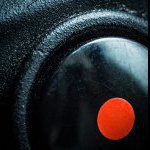Leaderboard
Popular Content
Showing content with the highest reputation on 02/26/2013 in all areas
-

Exploring Nikon D5200 HDMI output - review update
HurtinMinorKey and 2 others reacted to jgharding for a topic
For those looking for simplification, a summary of what I've learned so far about the destructive aspects of video compression follows. This is from the perspective of someone who likes to shoot but loses interest at the level of coding and mathematical formulas, or where the complexity of information outweighs the practical benefits gained from the knowledge outside of the lab/software or hardware development. If you're the same, you'll probably like it. --- Bit-depth = number of possible shades. 8-bit allows 255 different levels of colour for each channel. 10-bit allows 1023 different levels. And so on. Side effects of limited bit-rate such as 8-bit include banding in areas with subtle gradients such as sky and smoke, "plastic" looking skin tones. Practical fix: shoot your footage as close to your final look as possible. If you shoot flat, colour grade in After Effects, DaVinci, or another application with a 32-bit processing mode. --- Sub sampling = spatial resolution of colour channels. There are three colour channels in digital video. Uncompressed is R G and B, all at full resolution. Sub-sampled is Y (black and white, or luminance), Cb (blue) and Cr (red). 4:4:4 all channels are full resolution. 4:2:2 the colour channels are half resolution. 4:2:0 the blue channel is half resolution, the red channel is quarter resolution. This is not a mathematically perfect way of describing it, but it's conceptually sound for most of us in practice. It's as much as we need to know. Side effects of 4:2:0 sub sampling include jagged pixelation and edges to red areas such as red glow from lights or red clothing. Practical fix: use a cooler white balance and bring your red back in post using a finishing application like after effects. --- Bit rate = the amount of data used for video encoding measured over time. 50mbps is 50 megabits per second = 6.25 megabytes per second, for example. This data rate alone does not necessary directly reflect visual and aesthetic quality, as compression algorithms and implementations are extremely complex and varied. Some fall within standards, others do not. I-frame codecs encode each frame individually. I-frame allows most film-like motion "cadence". GOP encoding uses Groups Of Pictures. The longer the GOP the more the codec can struggle with lots of movement. Long GOPs can contribute to a digital video "feel" Side effects of limited bit rates include pixelation in high-motion shots, very little data in under-exposed or dark areas leading to blockiness and inability to recover shadow detail. general masking of natural sensor noise (grain) with unattractive pixelation. Practical fix: a low bit rate is very destructive even with an advanced codec like AVCHD. This is why Canon use AVCHD for the C100, and their implementation of MPEG2 for the C300. If your camera has a "black level" or "pedestal" or "Cinestyle" or "DRO", you can shift this up a little to prevent data from being encoded where there is very little priority given to it by the codec. This does spread data more thinly though, also remember your 8 bits... Hack your camera if you can ;) --- In short, working with compressed footage is a bit of a balancing act. A huge amount of data is thrown away in order to make files small and to separate markets. The process is destructive, and cannot be reversed, though being intelligent on set and in post can help a lot. The ideal is something like Red R3D: visually lossless compression that maintains raw processing capabilities. It is a joy to work with. Ironically, it's actually more important that you get your shot right with a cheaper consumer camera than with a RAW camera, as you can't do so much in post production. Though users of lower end DSLRs are the least likely to use a light meter, for example, they are actually the most likely to benefit from it. Practice makes perfect.3 points -

uncorrectable distortion with kowa 8-Z
Mondo and one other reacted to QuickHitRecord for a topic
Have your friend shine a flashlight at the anamorphic. Use the flares to make sure that your lens is properly aligned.2 points -
The comment about Nikon and CLIPPING, meah, whatever. From the few native samples of C300 I've looked at it appears to be able to capture luma into 16 - 255, like many cameras. Certainly many Canon mpeg2 video camera sources I've seen are 16 - 255 luma but assume 16 - 240 chroma. Rec709 primaries, transfer and luma coeffs. But I don't think they use the mpeg2 sequence display extension to signal full levels, so unless some sort of luma scaling into 16 - 235 is done at decompression a 32bit float conversion to RGB will almost certainly be required to prevent software clipping of luma, all depending on camera use and exposure choice. Even then the preview will look clipped but the data safe to be 'graded' into 16 - 235 range for encoding out. Nikon, Canon DSLR's & GH3 encoding into MOV all use full 8bit luma BUT also normalize chroma over the full range, not staying within 16 - 240. But use the h264 VUI Option 'fullrange' in the metadata of the h264 stream to signal to a well behaved decompressing codec to scale levels 16 - 235 before conversion to RGB. VLC with hardware acceleration on ignores the fullrange flag so preview looks more contrasty with levels beyond 16 - 235 being crushed to black and compressed to white accordingly. NLE preview the same even at 32bit float as it's all display referred material but with 32bit float workspace the out of range data is held onto not lost. Most NLE's these days respect the fullrange flag and avert any problem with software induced crushing and clipping. It is possible to simply turn off the fullrange flag in the stream, which is something I personally do in order to avoid the scaling of levels into reduced range at import into the NLE, so you have access to super white and black, then work at 32bit float which holds onto RGB values beyond the 0.0 to 1.0 range but this needs care, then scale into strict rec709 for encoding out. Why Nikon uses BT470 luma coeffs I'm unsure but guess it's to do with noise or hiding it, like they hide noise or at least have done previously by skewing the color channels. Difficult to compare and ultimately pointless I guess to try to compare C300 mpeg2 with DSLR h264 with regard to any benefit of super whites.1 point
-
c500 footage https://vimeo.com/604085221 point
-
Nikon D5200 vs Canon 5D Mark III
Michael Dontigney reacted to trimdell for a topic
Great comparison Andrew. As a hobbyist, not a pro, with good eyesight and a meagre budget, I prefer the Canon on some shots, but the difference on others seems minuscule or non existent. With your encouragement I have gone GH2/5DMKII, and it is a wonderful journey of discovery, learning, mistakes, and making the most of what few lenses I can afford. If I was a Nikon man (why do we have these camera driven definitions anyway?), or if I was starting out this camera would definitely be on my list. You champion the little guy and the seeker of reasonably priced alternatives, as well as being a stickler for image quality. Please keep up the good work.1 point -
Unless this camera is doing the C300's trick (when not in cine mode) and recording values above "clipping" in super white, so you can pull back in post, I'd guess clipped is clipped on this Nikon. That's what the such an ND is for though, bring the sky down a bit to keep things in range, I don't see why it's funny! It's a perfectly valid solution to such a problem. It certainly would allow someone to use a camera with low dynamic range and a filter to shoot a similar scene to that which could be shot without the filter and using a BMCC or similar raw camera.1 point
-

Crazy Custom GoPro Interchangeable Lens Cinema Camera!
BydrodoFieddy reacted to jgharding for a topic
Novo Digital Camera have created a custom housing for GoPro 3 that lets you fit C-Mount lenses and even disable auto exposure using a custom CPU! Pretty cool huh? Apparently it's pretty complex (and thus we can assume expensive to make) so it won't be a product to buy, but they will be hiring them out. Just goes to show how far you can go with a mod if you have the expertise... More info here: http://www.viewfactor.net/blog/?p=3311 point -

Nikon D5200 review
BydrodoFieddy reacted to mastroiani for a topic
Oh, sh%$t :) I think I missed that in your review. I thought it did output 24p via HDMI and bought the camera yesterday :) No big deal, I will test it out and see how it looks along side my hacked GH2. Or can return it. But thought I'd buy Blackmagic Shuttle and record 1080P24 ProRes to it... Oh well. I keep looking for the holy grail affordable camera that shoots great photos and great videos. Thanks for your reply Andrew1 point
